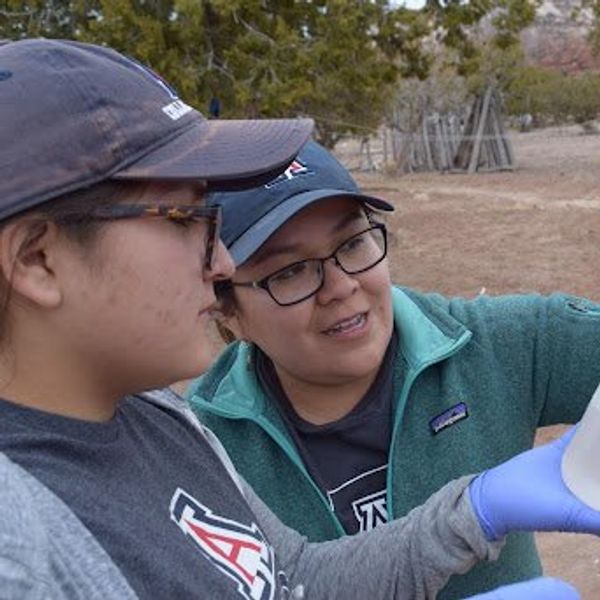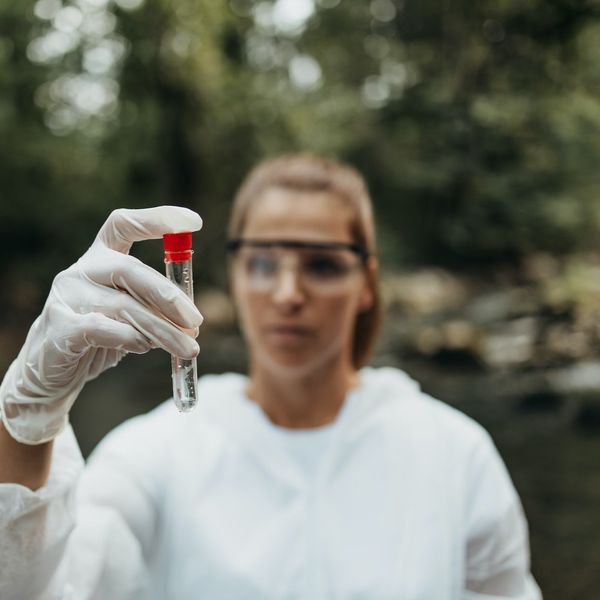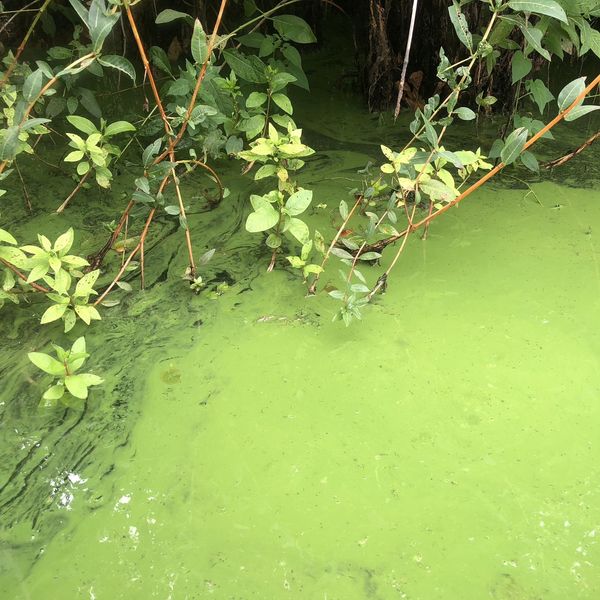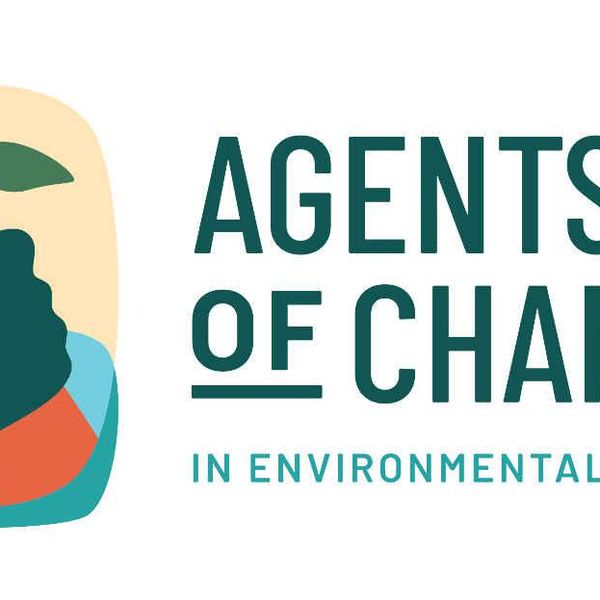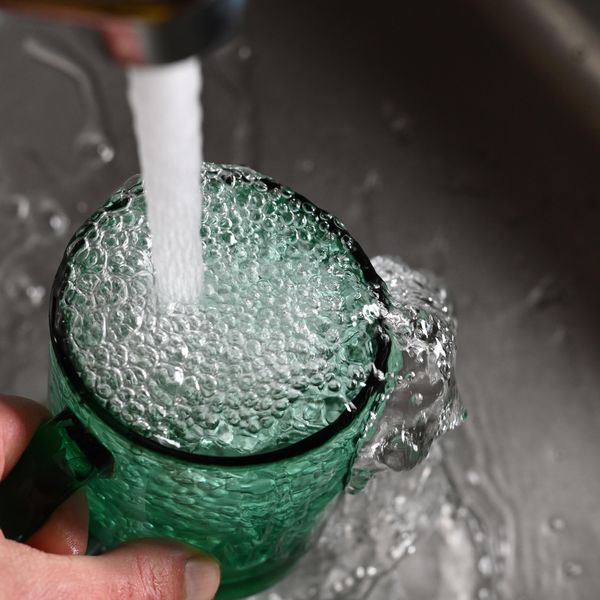PITTSBURGH—Lead was detected in 80 percent of water systems in Allegheny County, Pennsylvania, which encompasses Pittsburgh, in 2019, according to a new two-year analysis.
While the federal limit for lead in drinking water is 15 parts per billion (ppb), experts—including those at the American Academy of Pediatrics, the U.S. Centers for Disease Control (CDC) and Prevention, and the U.S. Environmental Protection Agency (EPA)—have long warned that there is no safe level of lead in drinking water.
Lead exposure in children damages the brain and nervous system, slows growth and development, and can lower IQ and cause learning, behavior, hearing, and speech problems.
The Pittsburgh-based health advocacy nonprofit Women for a Healthy Environment, sent Right to Know Requests (Pennsylvania's equivalent of Freedom of Information Act, or FOIA requests) to the 36 water systems in the county, asking questions about monitoring, contaminants, lead pipe replacements, staffing and funding, and transparency. Twenty-eight facilities responded in full.
The report states that while 80 percent of those water facilities had detected lead in their drinking water, only 36 percent had lead hazard information on their websites.
Related: There are concerning carcinogens in Western Pennsylvania water
In addition to lead, the report looked at a number of other contaminants including barium, chlorine, PFOS, PFOA, radium, arsenic, nitrates, trihalomethanes, and haloacetic acids, each of which is linked to industrial activities in the region (like oil and gas extraction, steel manufacturing, and other heavy industries).
It found that since 2016, more than half of the water systems in Allegheny County had had some type of water quality-related violation.
The report "shines a light on the impact of one person's address on the quality of their drinking water, along with how readily able they are to track down information on it," Talor Musil, Health Policy Coordinator for Women for a Healthy Environment, said in a statement.
Environmental injustice
The report pointed to previous research showing that communities of color and low-income communities in Allegheny County are most heavily impacted by lead exposure: According to the Pennsylvania Department of Health's 2018 Childhood Lead Surveillance Annual Report, among children tested for elevated blood lead levels before the age of 6, nearly four times as many Black and Hispanic children tested positive for lead poisoning compared to White children (4.5 percent vs. 1.2 percent).
Previous research has found that these same communities also see higher rates of death from air pollution, pointing to a pattern of environmental injustice.
Lori Rue, manager of the Braddock Water Authority, which serves an "environmental justice area," defined by the Pennsylvania Department of Environmental Protection as census tracts where 20 percent or more individuals live in poverty, and/or 30 percent or more of the population is minority, said in a statement "they are grateful to Women for a Healthy Environment for pulling this analysis together."
"We are one of the smaller community water systems, yet still face many of the challenges of larger systems," she added. "The report identifies ways that we can improve our system and across the region."
A call for federal action on lead

Lead levels in Allegheny County water systems. Credit: Women for a Healthy Environment
On December 22, 2020, the EPA released its long-awaited, revised Lead and Copper Rule, but in January the Biden administration paused implementation after environmental groups sued the EPA over the new rule, claiming it would actually loosen existing regulations and reverse progress aimed at protecting children's health.
The Biden EPA is considering strengthening the rule, and Women for a Healthy Environment is among the groups petitioning the agency to lower the federal limit on lead in drinking water from 15 to 10 ppb. The EPA has set a maximum contaminant level goal for lead in drinking water at 0 ppb, but existing regulations must take into account water authorities' limited ability to achieve that goal.
Women for a Healthy Environment's analysis found that about 14 percent of Allegheny County's water systems have lead levels between 10 and 15 ppb. If the proposed revisions to the Lead and Copper Rule move forward, these water systems would be required to replace lead service lines and reduce exposures for consumers.
"There is no safe level of lead in drinking water and this report amplifies the need for health protective action levels," Michelle Naccarati-Chapkis, executive director of Women for a Healthy Environment, told EHN.
"The 14 percent of water systems with levels between 10 and 15 ppb will be required under last year's revised federal Lead and Copper Rule to merely develop inventories and replacement plans for lead service lines," she added. "With implementation of the revised Lead and Copper Rule on pause, we are urging the EPA to strengthen the rule by requiring the replacement of all lead service lines when lead levels exceed 10 ppb."
New funding for solutions



Credit: Women for a Healthy Environment
The researchers at Women for a Healthy Environment also gathered data on which water systems have replaced lead lines, and whether they've done partial or full lead line replacements.
Partial line replacements typically only address the portion of water lines beneath a public street or sidewalk but do not address the portion of the lines that go into people's homes. Such replacements can shake loose lead in the sections of pipe that remain, which can temporarily result in significantly higher levels of lead in consumer's drinking water, and does little to protect consumers from lead exposure in the long run.
Before 2017, the Municipal Authorities Act of 1945 made it difficult for water systems in Pennsylvania to perform full lead service line replacements because municipalities could only use public funds to replace public sections of service lines. In October 2017 the state legislature passed and signed HB-674, which undoes that requirement and empowers municipal systems across the state to complete full line replacement if the work "will benefit the public health."
Of the 36 systems Women for a Healthy Environment contacted, eight public systems and three private systems reported doing partial line replacements since 2015, while only five reported doing complete line replacements.
Musil noted that many of the water systems in the region—especially smaller systems in lower-income communities—reported being understaffed or not having enough resources to properly manage testing and ensure optimal water quality for consumers on their own.
"As best practices have emerged across the country, and across our region, this points to the need for greater collaboration among water systems," she said.
The report includes a list of grants and loans available to water authorities for complete line replacements.
Pennsylvania Infrastructure Investment Authority, or PennVest, is a state office
that provides grants and loans for infrastructure projects. It's the primary source of support for lead service line replacement in the state of Pennsylvania.
Today, PennVest is expected to announce a new Lead Line Replacement project, which will allocate an additional $90 million for this work in 2021.
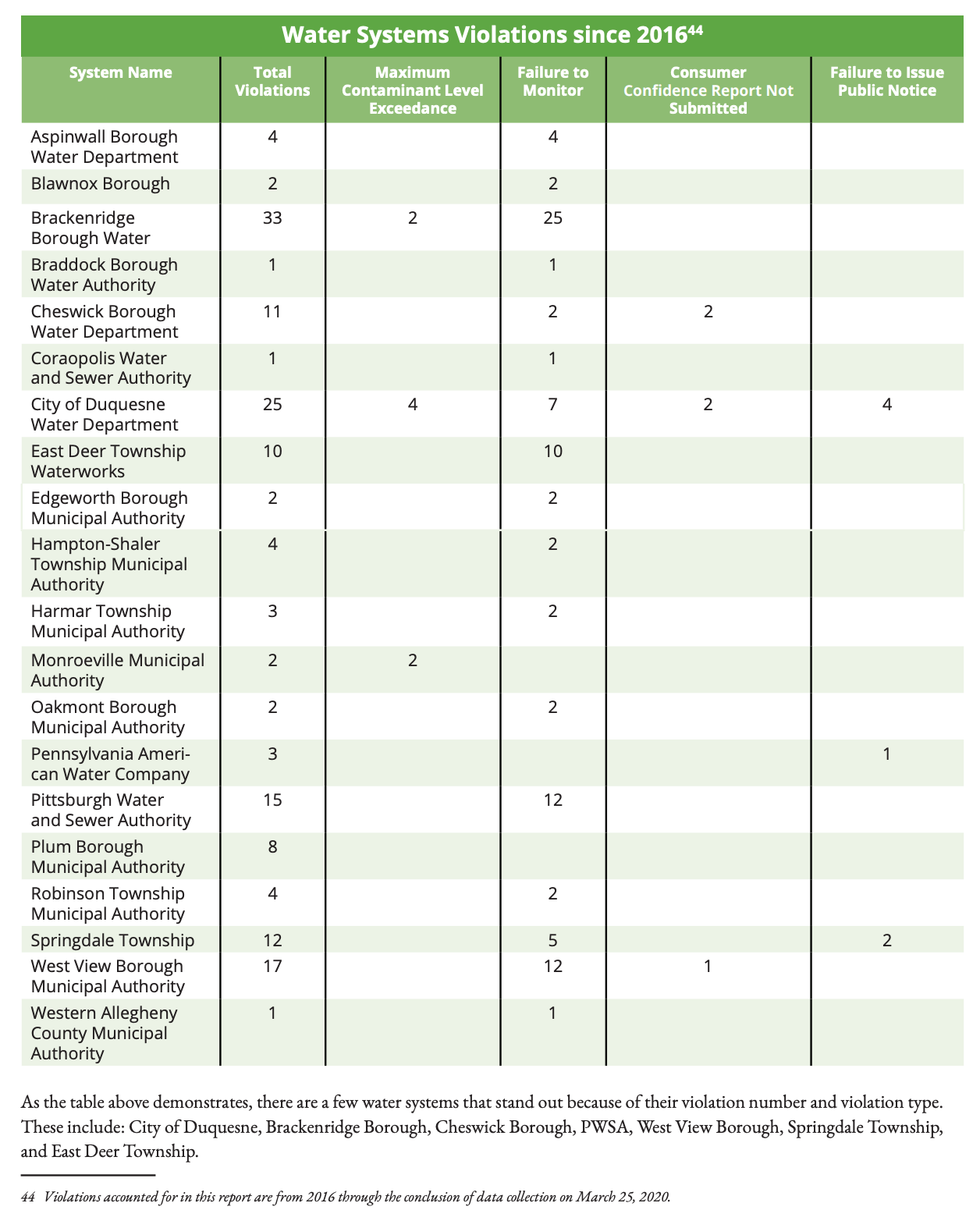
Credit: Women for a Healthy Environment
Editor's note: This article has been updated to reflect corrections made by Women for a Healthy Environment to their "Something's in the Water" report. Several charts were amended. The original report stated that these water quality violations had occurred in 2019; it was corrected to reflect that they had actually occurred since 2016.
Banner photo credit: Nenad Stojkovic/flickr


















